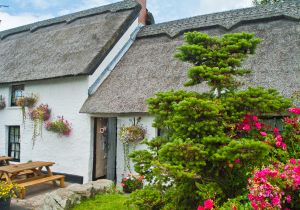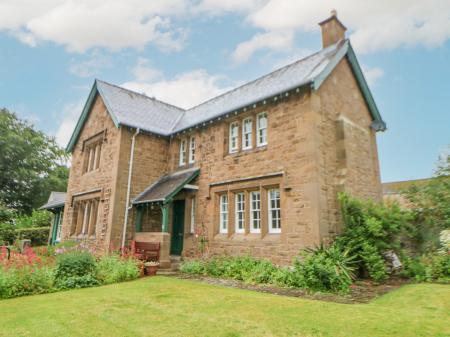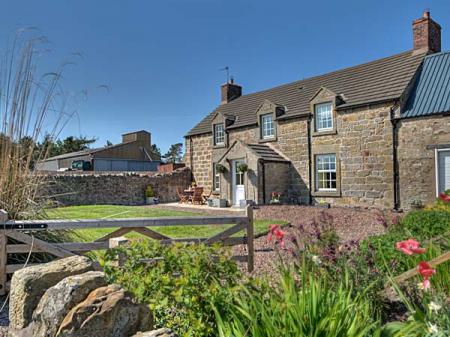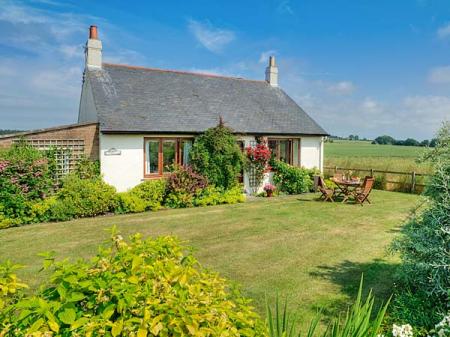
The Heatherslaw narrow gauge railway runs two miles from Etal to Heatherslaw in the summer months and is a popular visitor attraction.
Etal is part of the Ford & Etal Estate, which takes in the site of Flodden Battlefield, and the model estate village of Ford. It stands between the Cheviot Hills and the North Sea coastal plain.
History
There does not seem to have been a settlement here in the Saxon period, so we can say that the recorded history of Etal really begins with the coming of the Normans. The newcomers from France introduced the manorial system to England.
By the 14th century, we have records of the Manners family holding the Etal estate. In 1341 Robert de Manners gained a royal license to crenellate his manor house to protect it from the Scots. This was the formation of Etal Castle, still the most impressive building in Etal.
The Manners had to deal not only with raiding Scots from north of the border but also with the Heron family, who held the neighbouring estate at Ford. The Manners and Heron families were bitter enemies and attacked each other's castles several times.
In the late 14th century the Manners exchanged their Northumberland estates with the crown for lands in Leicestershire, and Etal Castle was used as the official residence of the Deputy Warden of the Marches. In 1513 James IV of Scotland captured Etal Castle but was himself defeated and killed at the Battle of Flodden a few days later. Scottish colours seized by the English were held at the castle after the battle.
In the post-medieval period, Etal became a centre for coal mining. The local colliery was owned by the Scremerston and Shoreswood Coal Company.
The Chapel
In 1856 Lady Fitzclarence of Etal House of Etal House built a chapel dedicated to St Mary the Virgin, as a memorial to her husband and child. The chapel was built by William Butterfield, perhaps the most successful and prolific architect of Victorian Gothic Revival churches.
In 1859 the estate was inherited by Louisa, Lady Waterford, who recreated nearby Ford as a model estate village, with its own school and housing for tenants. In 1907 a wealthy mining entrepreneur, the 1st Baron Joicey of Chester-le-Street, purchased the Ford estate and bought the Etal estate the following year. The combined estates are still owned by the Joicey family.
Today the village forms part of the combined Ford and Etal Estates. It is a pretty village, known for the castle, the Heatherslaw Light Railway, and the Black Bull pub, the only thatched pub in Northumberland. The Black Bull was once used to hold prisoners from the castle who had been sentenced to death.
Near the pub is the whitewashed village hall, which had a pair of rather odd wicker likenesses of pigs on the lawn when we visited.
If you stroll down the road past the castle you come to the River Till, where there are signposted riverside walks to enjoy.







 We've 'tagged' this attraction information to help you find related historic attractions and learn more about major time periods mentioned.
We've 'tagged' this attraction information to help you find related historic attractions and learn more about major time periods mentioned.


